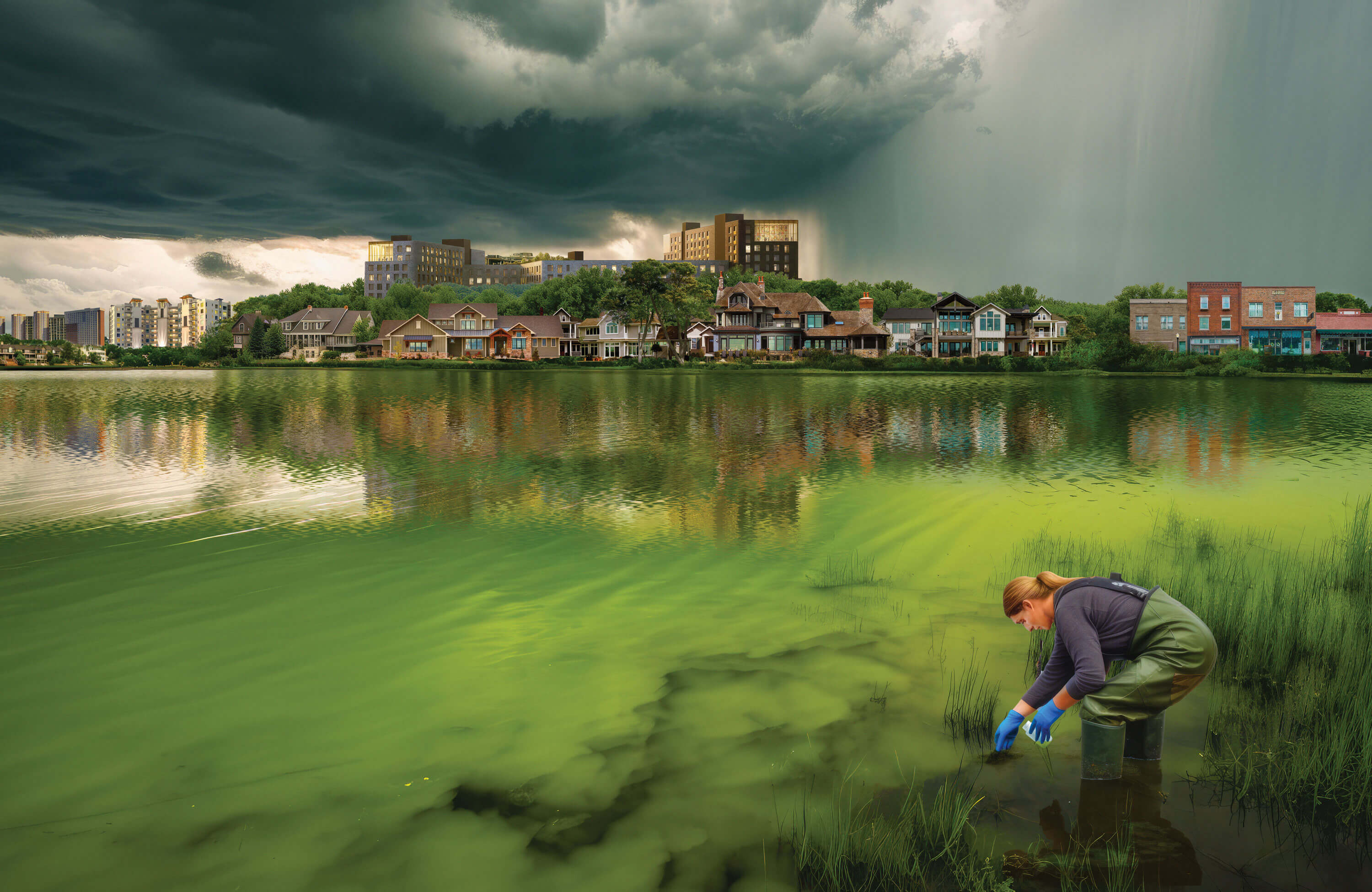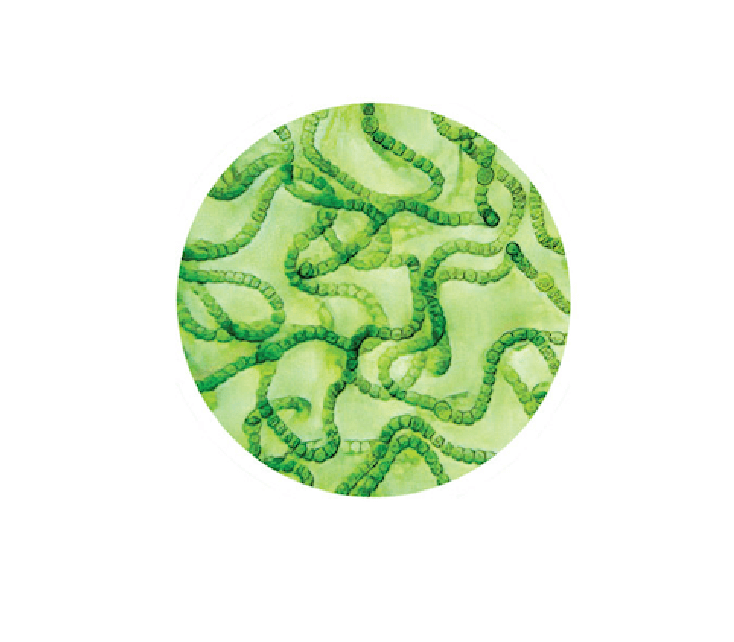
Troubled Waters
Monmouth researchers and local citizens have teamed up to restore the region’s coastal lakes.
Superstorm Sandy’s devastation of lake watersheds made clear the need for a more concerted approach toward lake monitoring and restoration.
That’s why in 2017, the University launched the Coastal Lakes Observing Network (CLONet), a project through which staff and students from the School of Science and Urban Coast Institute partner with municipalities and community groups to organize and equip community scientists to assist in lake monitoring efforts.
Funded by two $150,000 grants from the Jules L. Plangere Jr. Family Foundation, this first-of-its-kind study combines data collected by Monmouth researchers with data collected by community scientists to determine the health of 11 coastal lakes in Monmouth County.
“Everything in ecology is so variable, so the more data you have, the better you can home in on an average condition,” says Jason Adolf, Ph.D., an endowed professor of marine science and lead on the project. “That’s why the community scientist aspect was so beneficial: It not only gave people a chance to directly engage in the stewardship of the lakes they live by, it also allowed for continuous monitoring.”
The project’s first phase, which primarily focused on data collection, showed that coastal lakes were less healthy than the state’s inland lakes. It also revealed that, despite the lakes being within a 15-mile radius of one another, their water quality and health varied widely, with some lakes being reliably more polluted and more likely to develop harmful algal blooms (HABs) than others.
The project recently entered its second phase, and the data collected is informing actions to promote the restoration of health to the lakes and surrounding watersheds. Water sampling will continue to measure the success of the restoration efforts now underway.
“The water quality of the lake doesn’t necessarily reflect what’s happening in the lake but [rather] what’s happening in the watershed,” says Adolf. “It’ll be really cool to see in the community data the impact of some of the million-dollar watershed restoration efforts that are planned and whether they worked or not.”
Human causes of poor water quality
Development — Residential, commercial, and industrial — reduces the availability of natural buffers that impede runoff and leads to soil erosion during rain events.
Excess Nutrients — Rain events push excess nutrients such as phosphorous and nitrogen (from sewer leakage and fertilizer and stormwater runoff) into lake watersheds, feeding algae
Warming Temperatures — Toxic blue-green algae absorb sunlight and proliferate faster in warm, nutrient-rich waters, causing lake water to stagnate and become noxious
Colorful Culprits

HABs are a naturally occurring event, but due in part to human-caused factors, they can quickly proliferate and turn toxic, disrupting ecosystems and leading to a multiple-species die-off. These blooms have a negative impact on recreation and tourism industries, threaten human health, and can kill small animals, including pets. Cyanobacteria are a photosynthetic bacteria responsible for most HAB events.
Concerned Collaborators
A group of 60 community scientists collected more than 1,500 water samples during the last four years. The samples were tested for temperature, conductivity, dissolved oxygen, clarity, and pH. All data is available via the CLONet Data Explorer, an interactive and downloadable tool.
Steps to reduce poor water quality
Watershed improvements — Small efforts such as having a rain garden and not paving a majority of your lot help reduce stormwater runoff
Reduce waste — Properly managing trash and leaf litter helps, since they can add excess nutrients to water bodies if they enter sewage systems
Support local groups — Joining advocacy groups focused on lake management helps to directly support restoration efforts